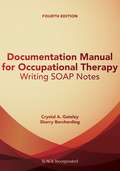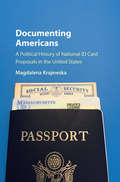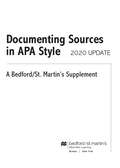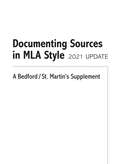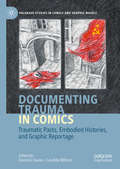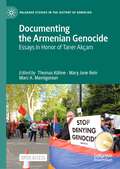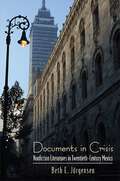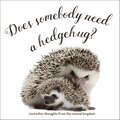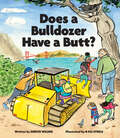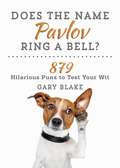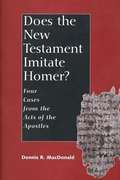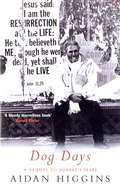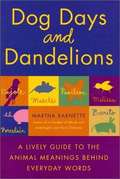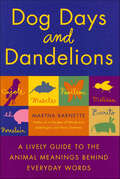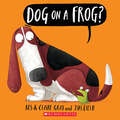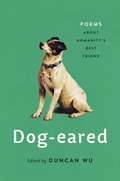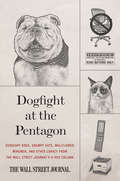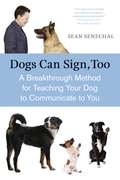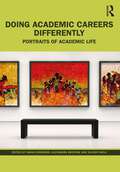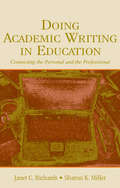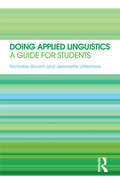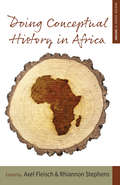- Table View
- List View
Documentation Manual For Occupational Therapy: Writing SOAP Notes (Fourth Edition)
by Crystal Gateley Sherry BorcherdingOne of the most critical skills that occupational therapists must learn is effective documentation. With that idea in mind, Documentation Manual for Occupational Therapy: Writing SOAP Notes, Fourth Edition presents a systematic approach to a standard form of health care documentation: the SOAP note. The clinical reasoning skills underlying SOAP note documentation can be adapted to fit the written or electronic documentation requirements of nearly any occupational therapy practice setting. This new Fourth Edition has been updated to reflect current information essential to contemporary occupational therapy practice, including the AOTA's Occupational Therapy Practice Framework: Domain & Process, Third Edition. Documentation Manual for Occupational Therapy, Fourth Edition also includes the COAST method, a specific format for writing occupation-based goals. Crystal Gateley and Sherry Borcherding use a "how-to" strategy by breaking up the documentation process into a step-by-step sequence. Numerous worksheets are provided to practice each individual skill as well as the entire SOAP note process. In addition, examples from a variety of practice settings are included as a reference. Although this text addresses documentation in occupational therapy practice, the concepts can be generalized across other health care disciplines as well. New in the Fourth Edition: The chapter focusing on reimbursement, legal, and ethical considerations has been vastly expanded to provide an overview of sources of reimbursement, regulatory guidelines, and legal and ethical issues. A new chapter focusing on electronic documentation has been added to illustrate how the concepts presented in this text can be used in various electronic documentation software products. Faculty will have access to 12 videos that can be used for instructional purposes and documentation practice. This edition includes an expanded Instructor's Manual with sample quiz questions for several of the chapters, templates and grading rubrics for documentation assignments, and other instructional resources. Instructors in educational settings can visit www. efacultylounge. com for additional material to be used for teaching in the classroom. Documentation Manual for Occupational Therapy: Writing SOAP Notes, Fourth Edition presents essential documentation skills that all occupational therapy clinicians, faculty, and students will find critical for assessing, treating, and offering the best evidence available for their clients.
Documenting Americans: A Political History of National ID Card Proposals in the United States
by Magdalena KrajewskaThis is the first and only comprehensive, book-length political history of national ID card proposals and developments in identity policing in the United States. The book focuses on the period from 1915 to 2016, including the post-9/11 debates and policy decisions regarding the introduction of technologically-advanced identification documents. Putting the United States in comparative perspective and connecting the vital issues of immigration and homeland security, Magdalena Krajewska shows how national ID card proposals have been woven into political conflict across a variety of policy fields. Findings contradict conventional wisdom, debunking two common myths: that Americans are opposed to national ID cards and that American policymakers never propose national ID cards. Dr Krajewska draws on extensive archival research; high-level interviews with politicians, policymakers, and ID card technology experts in Washington, DC and London; and public opinion polls.
Documenting Sources in APA Style: 2020 Update
by Bedford/St.Martin'sBedford/St. Martin’s is pleased to offer Documenting Sources in APA Style: 2020 Update. This brief 48-page print supplement adapts guidelines from the recently released Publication Manual of the American Psychological Association, 7th Edition, and can be packaged at no additional cost with any Bedford text. Students will appreciate the practical examples throughout; instructors will value the explanations designed to simplify citation practices. Contact your representative to learn more about packaging options.
Documenting Sources in MLA Style: A Bedford/St. Martin's Supplement
by Bedford/St.Martin'sThis e-book supplement gives your students the latest guidance on documenting sources in MLA style and follows the guidelines set forth in the MLA Handbook, 9th edition (April 2021). The supplement covers the elements of MLA citations, MLA in-text citation models, MLA list of works cited, MLA-style formatting for student papers, sample pages from student writing in MLA style, and a sample MLA research project.
Documenting Trauma in Comics: Traumatic Pasts, Embodied Histories, and Graphic Reportage (Palgrave Studies in Comics and Graphic Novels)
by Dominic Davies Candida RifkindWhy are so many contemporary comics and graphic narratives written as memoirs or documentaries of traumatic events? Is there a specific relationship between the comics form and the documentation and reportage of trauma? How do the interpretive demands made on comics readers shape their relationships with traumatic events? And how does comics’ documentation of traumatic pasts operate across national borders and in different cultural, political, and politicised contexts? The sixteen chapters and three comics included in Documenting Trauma in Comics set out to answer exactly these questions. Drawing on a range of historically and geographically expansive examples, the contributors bring their different perspectives to bear on the tangled and often fraught intersections between trauma studies, comics studies, and theories of documentary practices and processes. The result is a collection that shows how comics is not simply related to trauma, but a generative force that has become central to its remembrance, documentation, and study.
Documenting the Armenian Genocide: Essays in Honor of Taner Akçam (Palgrave Studies in the History of Genocide)
by Thomas Kühne Mary Jane Rein Marc A. MamigonianThis open access book brings together contributions from an internationally diverse group of scholars to celebrate Taner Akçam’s role as the first Turkish intellectual to publicly recognize the Armenian Genocide. As a researcher, lecturer, and mentor to a new generation of scholars, Akçam has led the effort to utilize previously unknown, ignored, or under-studied sources, whether in Turkish, Armenian, German, or other languages, thus immeasurably expanding and deepening the scholarly project of documenting and analyzing the Armenian Genocide.
Documenting the Undocumented: Latino/a Narratives and Social Justice in the Era of Operation Gatekeeper
by Marta Caminero-SantangeloLooking at the work of Junot Díaz, Cristina García, Julia Alvarez, and other Latino/a authors who are U.S. citizens, Marta Caminero-Santangelo examines how writers are increasingly expressing their solidarity with undocumented immigrants. Through storytelling, these writers create community and a sense of peoplehood that includes non-citizen Latino/as. This volume also foregrounds the narratives of unauthorized migrants themselves, showing how their stories are emerging into the public sphere. Immigration and citizenship are multifaceted issues, and the voices are myriad. They challenge common interpretations of "illegal" immigration, explore inevitable traumas and ethical dilemmas, protest their own silencing in immigration debates, and even capitalize on the topic for the commercial market. Yet these texts all seek to affect political discourse by advancing the possibility of empathy across lines of ethnicity and citizenship status. As border enforcement strategies escalate along with political rhetoric, detentions, and deaths, these counternarratives are more significant than ever before, and their perspectives cannot be ignored. What we are witnessing, argues Caminero-Santangelo, is a mass mobilization of stories. This growing body of literature is critical to understanding not only the Latino/a immigrant experience but also alternative visions of nation and belonging.
Documents in Crisis: Nonfiction Literatures in Twentieth-Century Mexico (SUNY series in Latin American and Iberian Thought and Culture)
by Beth E. JörgensenWinner of the 2012 Best Book in the Humanities presented by the Mexico Section of the Latin American Studies AssociationIn the turbulent twentieth century, large numbers of Mexicans of all social classes faced crisis and catastrophe on a seemingly continuous basis. Revolution, earthquakes, industrial disasters, political and labor unrest, as well as indigenous insurgency placed extraordinary pressures on collective and individual identity. In contemporary literary studies, nonfiction literatures have received scant attention compared to the more supposedly "creative" practices of fictional narrative, poetry, and drama. In Documents in Crisis, Beth E. Jörgensen examines a selection of both canonical and lesser-known examples of narrative nonfiction that were written in response to these crises, including the autobiography, memoir, historical essay, testimony, chronicle, and ethnographic life narrative. She addresses the relative neglect of Mexican nonfiction in criticism and theory and demonstrates its continuing relevance for writers and readers who, in spite of the contemporary blurring of boundaries between fiction and nonfiction, remain fascinated by literatures of fact.
Documents of Performance in Early Modern England
by Tiffany SternAs well as 'play-makers' and 'poets', playwrights of the early modern period were known as 'play-patchers' because their texts were made from separate documents. This book is the first to consider all the papers created by authors and theatres by the time of the opening performance, recovering types of script not previously known to have existed. With chapters on plot-scenarios, arguments, playbills, prologues and epilogues, songs, staged scrolls, backstage-plots and parts, it shows how textually distinct production was from any single unified book. And, as performance documents were easily lost, relegated or reused, the story of a play's patchy creation also becomes the story of its co-authorship, cuts, revisions and additions. Using a large body of fresh evidence, Documents of Performance brings a wholly new reading of printed and manuscript playbooks of the Shakespearean period, redefining what a play, and what a playwright, actually is.
Does History Make Sense?: Hegel on the Historical Shapes of Justice
by Terry PinkardHegel’s philosophy of history—which most critics view as a theory of inevitable progress toward modern European civilization—is widely regarded as a failure today. Terry Pinkard’s spirited defense of the Hegelian view, based on a subtle understanding of human subjectivity, will play a central role in contemporary reevaluations of Hegel’s work.
Does Somebody Need a Hedgehug?: And Other Thoughts from the Animal Kingdom
by Gibbs M. SmithQuack up your friends with this effortless gift. Animal puns of encouragement and endearment for friends, family members or coworkers: keep at your desk as a pick-me-up, or sneak it into someone&’s Christmas stocking. Whether you want to say, &“I ham so glad we're friends&” or &“Sometimes you need to be a little shellfish,&” cheeky humor always has a place amongst friends.
Does a Bulldozer Have a Butt?
by Derick WilderGreen Eggs and Ham meets Everyone Poops in this laugh-out-loud story that asks—and answers—the burning question in every kid's life.Does a scarecrow have a butt?Yep, you stuff him with a straw one.And does a crayon have a butt?Nope, but it can surely draw one.This silly, funny, clever book will be the most quoted text in all of elementary school.Over the course of a long walk across a city, one curious kid needs to know: "Does it have a butt?" Everything from sheep to ghosts to dinosaurs is subjected to this all-important question, and Dad is a never-ending source of answers. On a laugh-out-loud father-child ramble, we come to see that every butt, from a bullfrog's to a zombie's, has its own distinctive, and distinctively hilarious, quality.LAUGH-OUT-LOUD FUNNY: It's impossible to find a kid who doesn't giggle at the word "butt." The repetition of the word, the varied assortment of butts, and the clever rhymes make this a book that both parents and children will return to over and over again.A SNEAKY WAY TO TEACH ABOUT CONTEXT: The book isn't simply a repetition of one joke or word. Instead, it offers a crafty way of talking about what things mean in different contexts.SILLY AND SWEET, NOT GROSS: Butt jokes can potentially cross a line and become offensive or insensitive, but the tone and choices throughout this book are sweet and innocent, making it a unique, accessible option for parents and educators who want to normalize the asking of difficult questions.COUNT THE BUTTS! This book will change how you see the world: Not only will you start wondering about all inanimate objects' butts, you'll start seeing them everywhere! There are nearly 200 butts in the illustrations that aren't even mentioned in the text. Keen-eyed young readers will delight in the most hilarious seek-and-find they could ever imagine!Perfect for:• Parents• Grandparents• Educators and librarians• Fans of funny books
Does the Name Pavlov Ring a Bell?: 879 Hilarious Puns to Test Your Wit
by Gary BlakeEveryone loves wordplay! This collection of more than eight hundred quips and pun-filled anecdotes will have your friends in stitches! Classics and new inventions fill these pages with humor and wit. Divided into chapters according to theme—animals, celebrities, careers, food, and so on—there’s a pun for every occasion! Author Gary Blake dares you not to snicker at his contrivances: Two silk worms had a race. They ended up in a tie. Davy Crockett had three ears. A left ear, a right ear, and a wild frontier. A backwards poet writes inverse. Santa’s helpers are subordinate Clauses. Like tavern owners, ballet dancers make most of their money at the barre. Horses in the movies only have bit parts. Why does the Pope travel so much? Because he’s a roamin’ Catholic. Absinthe makes the heart grow fonder. A Freudian slip is when you say one thing and mean your mother. Eve was the first person to eat herself out of house and home. I used to work in a blanket factory, but the company folded. The calendar thief only got twelve months. A great gift or coffee table book, there’s no time like the present to order a copy of Does the Name Pavlov Ring a Bell? for the word-twisting, pun-loving humorist in your life.
Does the New Testament Imitate Homer? Four Cases from the Acts of the Apostles
by Dennis Ronald MacdonaldIn this provocative challenge to prevailing views of New Testament sources, Dennis R. MacDonald argues that the origins of passages in the book of Acts are to be found not in early Christian legends but in the epics of Homer. MacDonald focuses on four passages in the book of Acts, examines their potential parallels in the Iliad, and concludes that the author of Acts composed them using famous scenes in Homer's work as a model. Tracing the influence of passages from the Iliad on subsequent ancient literature, MacDonald shows how the story generated a vibrant, mimetic literary tradition long before Luke composed the Acts. Luke could have expected educated readers to recognize his transformation of these tales and to see that the Christian God and heroes were superior to Homeric gods and heroes. Building upon and extending the analytic methods of his earlier book, The Homeric Epics and the Gospel of Mark, MacDonald opens an original and promising appreciation not only of Acts but also of the composition of early Christian narrative in general.
Dog Days
by Aidan Higgins'Tired of walking in the dream I have returned to the country where I was born half a century ago' - The Higgins family is now dispersed; the third son of four brothers is himself the father of three sons in a family also dispersed, and our author 'looking for the quietness that Julian Sorel found in prison. ' he finds this problematical peace, sharing a bungalow near Brittas in Co Wicklow in an awkward two year tenancy with a school mistress with back back trouble. DOG DAYS is an account of those two years, with flashbacks to previous diaries that reveal a murky Dublin of whores and Provo killing, a raindrenched Connemara.
Dog Days And Dandelions
by Martha BarnetteThe author does not recommend that this book be read all at once. But, I could not help myself. If there is an ox in the history of our English "A," (and there is) then how could I wait to find out where the other animals might be influencing my own use of words?
Dog Days and Dandelions: A Lively Guide to the Animal Meanings Behind Everyday Words
by Martha BarnetteFrom apian (like a bee) to zodiac (little-animals circle), a word book that spots the animal origins of words and namesThere are mice in your muscles, and blackbirds in your merlot. Behind adulation is a dog's wagging tail. Peculiar houses a herd of cattle. Grubby is crawling with bugs. Wordhound Martha Barnette collects more than 300 common (and a few not-so-common) words that have surprising animal roots. Tracing word origins back to ancient Greek and Latin as well as to European roots and American slang, the entries offer a guided tour through literature, science, folklore, politics, and more--with a wilderness of animal meanings at every turn.For fledgling word sleuths as well as those who fawn over etymologies, this is a delightful smorgasbord for writers, students, and word lovers.
Dog on a Frog?
by Kes Gray Claire GrayFrog is turning the rules upside-down in this riotous, rhyming sequel to Frog on a Log?!"You know the rules," said cat. "Cats sit on mats, frogs sit on logs, and dogs sit on FROGS!""Well, I'm changing the rules," said the frog.In this hilarious sequel to Frog on a Log?, frog decides that he does not want to sit on a log, and he definitely does not want a dog to sit on a frog! So he changes the rules. Now, dogs sit on logs, and cats sit on gnats! But what will frog decide to sit on now? Chock-full of absurd animal rhyme pairings, Dog on a Frog? shows young readers that every animal has many special places to sit. Reminiscent of Dr. Seuss's Beginner Books, this sequel is a fun, educational read-aloud story that helps build reading skills!
Dog-eared: Poems About Humanity's Best Friend
by Duncan WuFrom Homer to Wordsworth to Gwendolyn Brooks, learn about history's greatest writers and the furry best friends that inspired them.Dogs are at once among the most ordinary of animals and the most beloved by mankind. But what we may not realize is that for as long as we have loved dogs, our poets have been seriously engaged with them as well.In this collection, English professor Duncan Wu digs into the wealth of poetry about our furry friends to show how varied and intimate our relationships with them have been over the centuries. Homer recounts how Odysseus's loyal dog recognizes his master even after his long absence. Thomas Hardy wrote poems from a pooch's perspective, conveying a powerful sense of dogs' innocent and trusting nature. And a multitude of writers, from Lord Byron to Emily Dickinson, have turned to poetry to mourn the loss of beloved dogs. Rich and inviting, Dog-eared is a spellbinding collection of poetic musings about humans and dogs and what they mean to each other.
Dogfight at the Pentagon
by Wall Street JournalDiscover the story behind these and more in this delightful collection of the wild, the weird, and the wonderful, culled from The Wall Street Journal's popular and long-standing A-Hed column.One of the The Wall Street Journal's most popular features for more than seventy years, the daily A-Hed column--named for a headline that looked like a letter A--has diverted readers from the more glum news of war, economic woe, natural disasters, and man-made malfeasance. Covering a wide range of lunacy and the unusual from across the nation and the world, the A-Hed continues to enchant longtime readers.Now, the best A-Hed stories from recent years have been bundled into this entertaining volume. There are romantic tales, including the Japanese "infidelity phone" (it keeps trysts secret) and the story of "wingmen" and "wingwomen" who escort wallflowers to nightspots and maneuver them into the arms of prospective catches. Lovers of dogs, cats, and fish will learn how a Marine Corps bulldog got promoted to sergeant, how a grumpy cat acquired a Hollywood agent, and will be left wondering if a sixty-three-pound carp named Benson died of natural causes in England--or was the victim of foul play. Funny, moving, and charming, these stories will make you laugh and keep you entertained.
Dogs Can Sign, Too: A Breakthrough Method for Teaching Your Dog to Communicate
by Sean SenechalImagine being able to ask your poodle, "Who's at the door?" and having her respond, "It's Katy." Or asking your golden retriever, "Do you want a treat?" and him responding, "No, water." Or asking your Border collie, "Which toy do you want?" and getting the response, "Stick." If you've ever wondered what dogs would tell us if they could, now you can find out. The K9Sign system teaches dogs to communicate to us-making it a first in any dog training book category.Dogs Can Sign, Too is the first book dedicated exclusively to the K9Sign system for teaching dogs to communicate to their human companions using a vocabulary of gestures.This extraordinary education tool, developed by the creator of AnimalSign Language exclusively for the canine community, teaches people and their pets a unique mode of communication that employs an extensive lexicon of specific signs. Sample signs range from general concepts, such as "Food" or "Play" to identifying special treats, such as "Liver" or "Cheese" and specifying a favorite toy, such as "Ball" or "Frisbee." Signs also include useful questions such as "Who's that?" or "What type?" to naming a particular friend or family member, or even indicating a stranger. Learning and practicing K9Sign is a fun, challenging, and rewarding experience for both you and your dog that is sure to deepen the human-canine bond while expanding our ideas about interspecies communication.
Doing Academic Careers Differently: Portraits of Academic Life
by Sarah Robinson Alexandra Bristow Olivier RatleShould academic careers always unfold in exactly the same way? Is there one best way of being an academic? This book says no. Assumptions about who academics are and what they should do are becoming increasingly narrow and focused on achieving so-called ‘excellence’ in teaching and research above anything else. This book problematises this and explores the scope for doing academic careers differently. Authors paint individual or group portraits of their academic careers, working with metaphors which challenge the dominant discourses of how academic careers should be led. From rejecting the pressure to focus on ‘one big thing’, to prioritising nurture and care, transcending disciplinary boundaries, reshaping own daily practice, connecting with communities, and being academics outside academia, the chapters in this book offer those considering, starting, or developing an academic career a treasure trove of many alternative possibilities. Presented as a portrait gallery through which readers are encouraged to meander at will, this compilation of insights into alternative academic lives will help to inspire and encourage current academics to re-think and take ownership of their careers in their own terms, according to their own strengths, weaknesses, and circumstances.
Doing Academic Writing in Education: Connecting the Personal and the Professional
by Janet C. Richards Sharon K. MillerThis clear, reader-friendly book is carefully designed to help readers gain confidence and acquire competence in their academic writing abilities. It focuses on real people as they write and actively involves readers in the writing process. The authors' innovative approach encourages reflection on how professional writing initiatives connect to the personal self. For pre-service and in-service teachers, graduate students, school administrators, educational specialists, and all others involved in the educational enterprise, effective writing is important to professional success. Organized to help the reader move progressively and confidently forward as a writer of academic prose, Doing Academic Writing in Education: Connecting the Personal and the Professional features: *activities to engage readers in connecting their writing endeavors to their personal selves, and in discovering their own writing attitudes, behaviors, strengths, and problem areas; *practical applications to inform and support the reader's writing initiatives--including opportunities to engage in invention strategies, to begin a draft, to revise and edit a piece of writing that is personally and professionally important, and to record reflections about writing; *the voices of the authors and of graduate students who are pursuing a variety of academic writing tasks--to serve as models for the reader's writing endeavors; and *writing samples and personal stories about writing shared by experts in various contexts--offering hints about conditions, self-reflections, and habits that help them write effectively. All students and professionals in the field of education will welcome the distinctive focus in this book on connecting the personal and the professional, and the wealth of practical applications and opportunities for reflection it provides.
Doing Applied Linguistics: A guide for students
by Jeannette Littlemore Nicholas GroomDoing Applied Linguistics provides a concise, lively and accessible introduction to the field of applied linguistics for readers who have little or no prior knowledge of the subject. The book explores the basics of the field then goes on to examine in more depth what applied linguists actually do, and the types of research methods that are most frequently used in the field. By reading this book students will find the answers to four sets of basic questions: What is applied linguistics, and what do applied linguists do? Why do it? What is the point of applied linguistics? How and why might I get involved in applied linguistics? How to do it? What kinds of activities are involved in doing applied linguistic research? Written by teachers and researchers in applied linguistics Doing Applied Linguistics is essential reading for all students with interests in this area.
Doing Conceptual History in Africa
by Rhiannon Stephens Axel FleischEmploying an innovative methodological toolkit, Doing Conceptual History in Africa provides a refreshingly broad and interdisciplinary approach to African historical studies. The studies assembled here focus on the complex role of language in Africa's historical development, with a particular emphasis on pragmatics and semantics. From precolonial dynamics of wealth and poverty to the conceptual foundations of nationalist movements, each contribution strikes a balance between the local and the global, engaging with a distinctively African intellectual tradition while analyzing the regional and global contexts in which categories like "work," "marriage," and "land" take shape.
